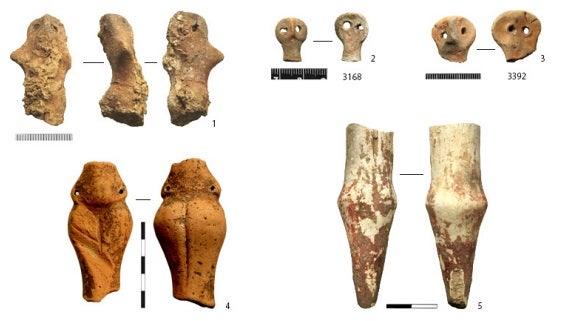Evidence of sacrificial practices found at 6,000 year old temple in Ukraine
Burnt animal bones found on the remains of stone altars

Your support helps us to tell the story
From reproductive rights to climate change to Big Tech, The Independent is on the ground when the story is developing. Whether it's investigating the financials of Elon Musk's pro-Trump PAC or producing our latest documentary, 'The A Word', which shines a light on the American women fighting for reproductive rights, we know how important it is to parse out the facts from the messaging.
At such a critical moment in US history, we need reporters on the ground. Your donation allows us to keep sending journalists to speak to both sides of the story.
The Independent is trusted by Americans across the entire political spectrum. And unlike many other quality news outlets, we choose not to lock Americans out of our reporting and analysis with paywalls. We believe quality journalism should be available to everyone, paid for by those who can afford it.
Your support makes all the difference.Archaeologists exploring the remains of a 6,000 year old temple in Ukraine have found evidence of complex sacrificial practices at the site.
The temple, thought to belong to the ancient Trypillian culture, was found near the modern-day city of Nebelivka and originally unearthed in 2009.
Burnt bones of lambs were found lying on the remains of stone altars, suggesting sacrifices had taken place on the site.
The building, which was two stories high, was part of a vast 288 acre prehistoric settlement which may have contained as many as 1,200 buildings.
The temple itself measures 60 metres by 20 metres and was made of wood and clay. It included a gallery and a courtyard.

The researchers, from the Institute of Archaeology of the National Academy of Sciences of Ukraine, speculated that the floors and walls of the upstairs rooms appear to have been decorated with red paint in order to inspire a sense of sacrificial awe in its occupants.
In these rooms, altars took pride of place. Clay figures of humans were found, scattered around the ceremonial areas, with pottery fragments and human hair decorations also found.
An academic paper describing the finds at the temple was published by John Chapman, Mikhail Yu. Videiko, Bisserka Gaydarska, Natalia Burdo, Duncan Hale in the Journal of Neolithic Archaeology late last month.
Join our commenting forum
Join thought-provoking conversations, follow other Independent readers and see their replies
Comments